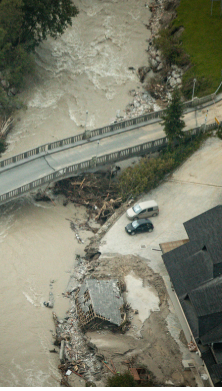Liability losses can range from the minor (goods damaged in transit) to the bizarre (a run-in with a flying squirrel) to major disaster events which dominate the global headlines.
The third in the series of AGCS’ Global Claims Review reports examines liability loss and claims developments through the years 2011 to 2016. The fact that during this time period more than 100,000 claims from over 100 countries were received by insurers, including AGCS, provides an indication of how vast the risk landscape is. Liability losses can range from the minor (goods damaged in transit) to the bizarre (a run-in with a flying squirrel) to major disaster events which dominate the global headlines…
The liability claims analyzed for this latest edition of the Global Claims Review have an approximate value in excess of €8.85bn ($9.3bn). This means that insurers have paid out – on average – more than €4.3m ($4.5m) every day for more than five years to cover losses – outlining the important role the sector has to play in helping businesses manage and mitigate such perils.

Claims payments can vary enormously in scale, reflecting the widespread nature of the risk landscape. Major liability losses (>€1m) such as aviation, shipping or terrorism incidents, for example, account for fewer than 1% of claims by number but 74% (>€6.5bn) of the total value of all claims analyzed. Conversely, around 80% of claims are valued at or below €20,000, accounting for just 3% of total value.
According to AGCS claims analysis, defective product/ work incidents are the top cause of liability-related losses for businesses globally, accounting for almost a quarter (23%) of the value of all claims received, as well as being the third highest generator in terms of number of claims. Protection against property damages, bodily injury or recall costs caused by a business’ products, or work performed, is an important offering from the industrial insurance sector. And today’s complex global supply chains, which involve large numbers of products and suppliers concentrated on a smaller number of larger companies, means such claims have been becoming larger and more challenging to settle. Generally, the number of reported incidents, particularly with regards to product recall, have been rising, driven by a more robust focus on both safety and regulation.
Significant improvements in the areas of automotive and aviation safety may have reduced the number of major causes of collision/crash incidents, such as road traffic and aircraft accidents in recent decades, but the impact of such events is still a major contributor of liability losses globally, accounting for over a fifth (22%) of the value of all claims, as well as generating the most claims.
Human error is the third top cause of liability loss according to total value of all claims analyzed (19%), although this is a relatively low driver of claims in terms of frequency, accounting for around just 1%. While this loss category includes the impact of everyday employee errors in and around the workplace, it also includes the impact of much larger events where human error has been judged to be the main cause, such as major aviation and shipping events. For example, in the shipping sector it is estimated that between 75% and 96% of all accidents can be attributed to human error1. Claims payments for major human error events will obviously be significantly higher than the norm.
Collectively, the top three causes of loss account for over 60% of the value of all liability losses analyzed, while the top 10 causes of loss for global businesses account for over 80% of all liability losses.
According to AGCS claims analysis, defective product/ work incidents are the top cause of liability-related losses for businesses globally, accounting for almost a quarter (23%) of the value of all claims received, as well as being the third highest generator in terms of number of claims. Protection against property damages, bodily injury or recall costs caused by a business’ products, or work performed, is an important offering from the industrial insurance sector. And today’s complex global supply chains, which involve large numbers of products and suppliers concentrated on a smaller number of larger companies, means such claims have been becoming larger and more challenging to settle. Generally, the number of reported incidents, particularly with regards to product recall, have been rising, driven by a more robust focus on both safety and regulation.
Significant improvements in the areas of automotive and aviation safety may have reduced the number of major causes of collision/crash incidents, such as road traffic and aircraft accidents in recent decades, but the impact of such events is still a major contributor of liability losses globally, accounting for over a fifth (22%) of the value of all claims, as well as generating the most claims.
Human error is the third top cause of liability loss according to total value of all claims analyzed (19%), although this is a relatively low driver of claims in terms of frequency, accounting for around just 1%. While this loss category includes the impact of everyday employee errors in and around the workplace, it also includes the impact of much larger events where human error has been judged to be the main cause, such as major aviation and shipping events. For example, in the shipping sector it is estimated that between 75% and 96% of all accidents can be attributed to human error1. Claims payments for major human error events will obviously be significantly higher than the norm.
Collectively, the top three causes of loss account for over 60% of the value of all liability losses analyzed, while the top 10 causes of loss for global businesses account for over 80% of all liability losses.


SOURCES
1. Safety & Shipping 1912-2012 From Titanic to Costa Concordia, Allianz Global Corporate & Specialty
Newsletter
Keep up to date on all news and insights from Allianz Commercial















